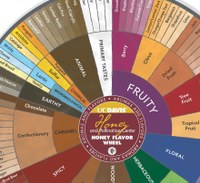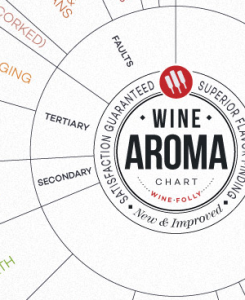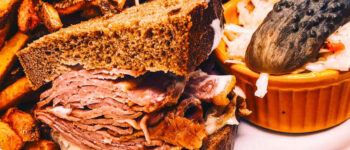Running the MeadMakr Podcast is a lot of fun. We try meads in every episode, with the opportunity to explore the variety available in the meadium (you can find the list of every mead tried here). But if you are just beginning your nectar-filled journey, what does mead taste like? And what resources are available to help the uninitiated become more familiar with this fabulous beverage? In this post, we’ll walk you through the mead tasting process and point you towards the best resources we’ve found to help us evaluate the beverages we so love, including some MeadMakr developed tasting sheets you can use for your next mead party!
What does mead taste like?
Many people encountering mead for the first time expect the beverage to taste sweet. Mead is made from honey, so this conclusion is warranted. But mead is not always a sweet beverage. Rather, mead can be dry to the bone. Or it can be fruity (melomel), or heavily spiced (metheglin). The options truly are endless.
The one constant in mead should be the taste of fermented honey. Depending on the varietal used, the honey may impart any number of subtleties in the final tasting profile. If you imagine honey without the sweetness, you will appreciate the flavors that should come across in a traditional mead. It should be floral and clean, reminiscent of a white wine, but often with stronger flavor.
That said, mead is going to taste different to everyone. Your best bet to understand the flavor is to try it. And with the plethora of commercial meaderies popping up around the country, it shouldn’t be too hard to find a quality mead. When you’ve picked up a bottle or have one of your own to try, jump to the next section to understand how to evaluate the flavor of your mead.
The Mead Tasting Process
Before you start your tasting, determine what you know about your mead. Are there any special ingredients you should be looking for in the mead? Was there a varietal honey specifically identified?
In terms of residual sugar, is the mead dry, semi-sweet (medium), or sweet? Is the mead carbonated? If so, by how much (still, petillant, or sparkling)? And what is the alcohol content? Is it low like a hydromel or session mead? Is it standard (9-14% abv)? Or is it a high alcohol sack mead?
These should be considered before you pour your glass, so you have an idea of what to expect in your mead.
Next, there are four things to consider when evaluating the mead: aroma, appearance, flavor, and mouthfeel. These individual components will help you to better appreciate and identify what you like or dislike about your mead, beyond just a general, “This is good” or “I hate that.” In reading through the next section, follow the guidelines to properly evaluate the given component.
1. Appearance
Appearance refers to the look of the mead. Is it clear and brilliant? Is it cloudy and muddled? Are the colors golden, or do the impart reds, oranges, or purples from fruit additives? To better evaluate the appearance, be sure to comment on the following aspects.
Comment on clarity: Clarity may be cloudy to crystal clear, with clearer meads preferred.
Comment on color: The color may vary widely depending on honey variety and any optional ingredients. If no honey variety is declared, almost any color is acceptable. If a honey variety is declared, the color should generally be suggestive of the honey used. Hue, saturation and purity of color should be considered. Stronger versions (standard and sack) may show signs of body (e.g., legs, meniscus) but higher carbonation levels can interfere with this perception.
If carbonated, comment on bubbles or head formation: Size, persistence, quantity, rate, and mousse. Smaller bubbles are more desirable and indicative of higher quality than larger bubbles.
2. Aroma
Aroma refers to the scent of the mead, and may include floral notes indicative of the honey source, fruitiness, or spiciness based on the ingredients used. In addition, there may be some aromatics present resulting from the fermentation process (alcohol, sulfur, yeastiness, etc.). In evaluating the aroma, ensure you touch on the following aspects.
Comment on the mead’s aroma: The aromatics may seem vinous, fruity, floral, or spicy. The bouquet (rich, complex aromatics arising from the combination of ingredients, fermentation and aging) should show a pleasant, clean fermentation character, with fresh aromatics being preferred over dirty, muddled, yeasty, or sulfury notes.
Comment on the intensity of the honey aroma: Stronger or sweeter meads may have a stronger honey aroma than drier or weaker versions. If honey varieties are declared, is the varietal character of the honey present?
Comment on the presence of offensive odors: Off odors include phenols (harsh or chemical) and oxidation (often a strong sherry-like or light molasses-like character. A subtle, sherry-like oxidation character can add complexity in some situations, but not if the oxidation ruins the character of the mead. Alcohol aromatics may be present, but hot, solventy or irritating overtones are a defect. The harmony and balance of the aroma and bouquet should be pleasant and enticing.
3. Flavor
Flavor refers to the taste you get when you drink the mead. Is it heavy of honey? Do you get any vinous notes like a wine? Are the ingredients present (fruits and spices), and is the flavor balanced or does one aspect dominate the others. To identify the flavors in your mead, evaluate the following.
Comment on the mead’s flavor aspects: Yeast or fermentation characteristics may be none to noticeable, with estery, fresh and clean flavors being most desirable. Alcohol flavors should be smooth and well-aged, not harsh, hot, or solventy. Higher carbonation (if present) enhances the acidity and gives a “bite” to the finish. Very light oxidation may be present, depending on age, but an excessive molasses, sherry-like or papery character should be avoided.
Comment on honey flavor and sweetness: Stronger, sweeter meads will have a stronger honey flavor than drier, weaker versions. If honey varieties are declared, is the varietal character of the honey apparent? In no case should the residual sweetness be syrupy, cloying or seem like unfermented honey. If dry, is there any perceived sweetness?
Comment on the aftertaste: Mead generally lingers longer than other alcohols. How long does the flavor linger? Is the aftertaste pleasant?
4. Mouthfeel
Mouthfeel refers to the physical and chemical sensations you feel while drinking the mead. It may refer to the mead’s body, texture, or balance. Comment on the following aspects to better appreciate the mouthfeel of the mead.
Comment on the mead’s body: The body can vary widely, although most are in the medium-light to medium-full range. Body generally increases with stronger and/or sweeter meads and generally decreases with lower gravity and/or drier meads. Sensations of body should not be accompanied by an overwhelmingly cloying sweetness (even in sweet meads). A very thin or watery body is likewise undesirable.
Comment on the acidity and astringency: Acidity and tannin help balance the overall honey, sweetness and alcohol presentation.
Does the carbonation impact the mead’s mouthfeel? High carbonation will enhance the acidity and give bite to the finish.
See more : How Long Does Canned Spam Last? (Shelf Life and Storage Instructions)
Is a warming alcohol presence perceived?
Overall Impression
When you finish commenting on the four major aspects of the mead (appearance, aroma, flavor, and mouthfeel), it is often beneficial to consider the overall impression of the mead. Truly great meads will be brilliant in appearance, and have a strong balance between the aroma, flavor, and mouthfeel consistent with the mead description (ingredients, sweetness, carbonation, and alcohol content). Take a few notes on the overall impression to wrap up the evaluation.
The MeadMakr Tasting Sheets
To help you during your next tasting when you don’t have access to the site, we’ve put all of this information into a set of cards you can cut out from a printing on an 8.5″x11″ sheet of paper. These should help to evaluate the specific aspects of your mead that you like and dislike, rather than just the simple response that the mead is good or bad. (Tasting Cards)
Similarly, we have put together an evaluation sheet for you to catalog your experiences drinking mead. We don’t include scores in our sheets, but you could easily turn this into a judging sheet if you like. (Tasting Sheet)
Further Reading
The BJCP Style Guidelines
The MeadMakr tasting sheets are based heavily on the process used to evaluate meads per the Mead Judge Certification Program, a subset of the Beer Judge Certification Program (BJCP). The mead style guidelines are specific to identifying what to expect for each style of mead, and go into much more detail than the process outlined above in regards to what to expect when drinking your mead.
Tasting WHeels
Did you read this whole post and just feel like you don’t have the vocabulary to properly appreciate your mead? You aren’t alone. We went through the same experience in evaluating meads for the podcast. To help us with our vocabulary, we found the following tasting wheels extremely useful for identifying those flavors we couldn’t properly describe.
The UC Davis Honey and Pollination Center’s Honey Wheel  The Honey Flavor and Aroma Wheel, developed by the UC Davis Honey and Pollination Center, was designed specifically to help individuals to identify and better appreciate the varieties of honey available. This is especially useful in evaluating meads, and will give you a good idea of the flavor compounds that may be present in your mead from the honey.
The Honey Flavor and Aroma Wheel, developed by the UC Davis Honey and Pollination Center, was designed specifically to help individuals to identify and better appreciate the varieties of honey available. This is especially useful in evaluating meads, and will give you a good idea of the flavor compounds that may be present in your mead from the honey.
Wine Folly’s Wine Aroma Wheel  The one drawback of the honey flavor and aroma wheel is that it doesn’t include specific flavors resulting from fermentation. While UC Davis works to produce a wheel specific for mead, the Wine Aroma Wheel by Wine Folly is a great place to start. It is still missing some specific alcohol flavors and linkages between flavor profiles and faults, but is a great first start at identifying some of the flavor aspects of fermented beverages.
The one drawback of the honey flavor and aroma wheel is that it doesn’t include specific flavors resulting from fermentation. While UC Davis works to produce a wheel specific for mead, the Wine Aroma Wheel by Wine Folly is a great place to start. It is still missing some specific alcohol flavors and linkages between flavor profiles and faults, but is a great first start at identifying some of the flavor aspects of fermented beverages.
Judging Sheets
Have you graduated from the basic tasting sheets and want a format more conducive to judging meads? Check out the resources below.
The BJCP Mead Scoresheet
The golden standard for mead judging forms is the BJCP’s own scoresheet. It includes areas to evaluate the aspects above, as well as identifies some common flavors that may be present (some are faults). Almost every mead competition is going to start with this as the basis for their judging sheets, making some minor modifications as required by the competition format.
The Mead Made Complicated Tasting Sheet

Another good resource for judging meads comes from another mead blogger over at Mead Made Complicated. Their Evaluation Sheet includes a nice flavor balance chart, showing you in a plot how the sweetness, acidity, and alcohol content should all balance in the final mead. There is also a nice mini-glossary on the second page to help explain some of the terms for those who haven’t seen them before.
We hope this post was helpful and gave you some things to think about the next time you drink your mead. Speaking of, what do you use to evaluate your meads? Let us know in the comments section below!
Nigel Gildon editor:Nigel Gildon is the editor of Chef Wayne’s Big Mamou: Chef Wayne’s Big Mamou. He has worked in the publishing industry for many years and has a passion for helping new authors get their work into the hands of readers. 63 Liberty Street * Springfield, MA 01003




